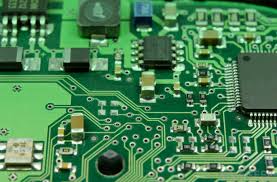The title of their paper reads "Advanced Materials for High Performance AgElectronics."
Thus, the world of flexible PCB technology is improving by leaps and bounds in material levels to improve the performance longevity. Breakthroughs have now allowed us to use liquid crystal polymer (LCP) at higher frequencies, which offers better electrical properties than any other substrate, including low dielectric loss, making it suited for RF and redefined microwave circuits. LCP is able to perform in temperatures between -200°C and 300°C, which makes it compatible with some of the most rugged environments and when used in place of traditional materials.
Miniaturization and High Density Interconnects
The demand for miniaturization remains one of the main movers of new flexible PCB concepts. The latest advancements in tech have allowed to create flex circuits so thin that some layers are as thin as 25 micrometers. That is key for things like implants in medical devices where space and sheer weight are among the critical constraints. In fact, the advent of high-density interconnect technology in flexible PCBs means more and more connections may be made in a smaller space area, thereby allowing for the additional lens of complexity and device miniaturization.

Improved 3D Installations
With modern 3D installation capabilities, the concept of flexibility in PCBs has taken a literal turn. With flexible circuit technology engineers can make circuits that fold and bend to 3D forms improving their integration into non-conventional electronic devices such as wearable tech and embedded sensors. This feature not only simplifies the design process but also increases system reliability by eliminating connectors and discrete wiring.
Improved Assembly Processes
Flexible PCB manufacturing processes - did you know these are also in the midst of some interesting shifts? Laser Direct Imaging TechnologyLaser direct imaging, or LDI, technology has improved flexibility circuit manufacturing through higher accuracy and shorter lead times. LDI technologies are critical in today's HD applications to map fine lines below 50 microns accurately. Moreover, a developing trend in the production of flexible PCBs, roll-to-roll processing, allows mass production to take place, meaning that the cost decreases whilst flexible circuits become more widely used as well.
Volume 23, Issue 23 Special Issue: Environmental impact and sustainability
Sustainability in the Flex Circuit Industry Polyimides and other materials have come under scrutiny for their environmental impact, pushing towards recyclable thermoplastics as a replacement. In addition, manufacturing methods are changing so that there is little or no waste-such as bioengineered foods or zero discharge of hazardous chemicals -as well as meeting more strict environmental standards affecting carbon emissions and packaging waste (recall the wave of cardboard food packaging?).
If you want to delve deeper into the world of flex pcbs and how it has evolved, visit our extensive blog.
These advancements in flexible PCB technology are set to redefine the electronics frontier by guaranteeing smarter, faster, but lighter designs, thus demonstrating the industry's dedication to eco-friendly thinking and innovation. With the technology coming into play, the future of electronics is moving towards the direction of the flexibility.